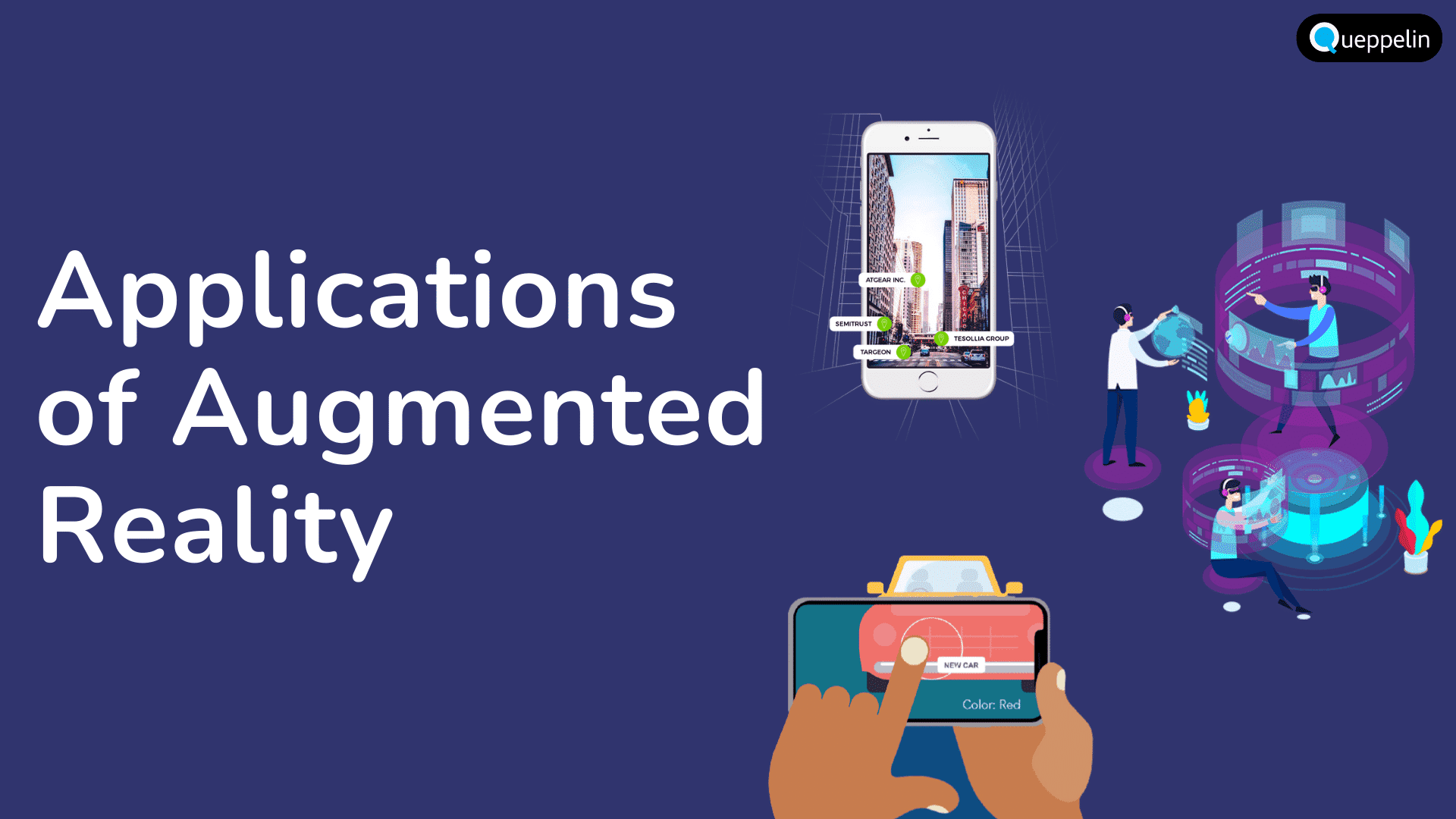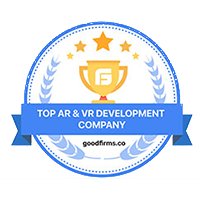Exploring Augmented Reality
Visualizing virtual reality and video in one image is known as Augmented Reality (AR). Augmented reality, which is a subset of computer graphics, is becoming more useful outside of research, inspiring new methods of human-computer interaction and interface design, according to a new study. There are various technologies required for its use, as well as current and future applications of augmented reality, which are described below. Customers’ experiences are shifting away from just what they see to immersing them in the brand experience itself, as technology continues to advance in this area.
As a result of augmented reality (AR), which overlays an image on a user’s view of the real world and enhances it with sound and touch, the landscape has been transformed. AR is indeed blurring the lines between reality and fiction.
Using Augmented Reality In 3 Different Ways
Pepsi MAX
An AR-enabled bus stop display was used by PepsiCo to prank commuters in London. (Jacob Kastrenakes, Mar 25, 2014) An on-the-shelf video showed an on-the-shelf video of people being picked up by an alien tentacle.
Disney
Disney Research developed technology in 2015 that turns coloring book characters into 3D as they are colored. (Jamieson Cox, Oct 5, 2015)
L’Oréal
Ideal and L’Oréal teamed up to integrate the L’Oréal brand’s makeup collections into the YouCam Makeup mobile app. This new approach challenges the way consumers have traditionally discovered and purchased beauty products.
Beauty shoppers today need to be able to test products, according to research. The Millennial generation, in particular, has become obsessed with contouring, strobing, and color correcting. (Robert Williams, Nov. 6, 2020) Because of L’Oréal and Perfect Corp’s collaboration, iPads are now obtainable at beauty countertops, allowing customers to try on makeup at home or on the go.
AR Capabilities
Many companies are taking advantage of applications of augmented reality (AR) to improve their communication and engagement with their customers. Companies are increasingly turning to Augmented Reality (AR) to gain deeper insight into their customers, which is becoming increasingly important to maintain engagement and interaction with consumers. The real value of AR lies in bridging the gap between the digital and physical worlds, which is shaping the human experience in a fundamentally positive way.

Three Augmented Reality Capabilities
- Visualization
Visualizing a story or experience is always the best way to convey it. Virtual reality (AR) offers a way to enhance and visualize information both inside and outside the box while avoiding external distractions. augmented reality (AR) enhances the user’s perception of the physical world by overlaying digital information on top of it. Using AR to its full potential. For this reason, AR displays can also present a variety of non-natural effects in a real-world environment because virtual information does not necessarily have to adhere to physical rules.
Characters living in real-world game environments to the presentation of hidden structures, in reality, are all possible. A virtual companion to a real-world object is enhanced to reveal previously opaque objects, creating the impression and can see through them. As a result of AR’s ability to make the real world more detailed, humans can gain a better grasp of their own experiences.
- Collaboration is Improved
It is possible to create unique collaborative experiences by utilizing augmented reality systems (AR). Collaboration, as well as conceptual understanding, are aided by AR objects. Even though AR is becoming more consumer-friendly, it is still primarily used in the business world with applications in field services, manufacturing, and training.
A superior toolkit for the virtual professional of tomorrow’s workplace is being developed by them. Using mixed reality, a global workforce of remote teams can work together on any organization’s difficulties. A better connection becomes more important as our network grows.
- The Interaction is Binding
Also, augmented reality is an interactive medium, resulting in an emotional connection between the user and the product or service. Ultimately, we influence one another through our mutual interaction and exchange of information. This means that brands could use augmented reality (AR) to influence emotional experience, inducing the user to engage with the product or service more deeply.
Persuasion through interaction in its purest form is what you’re witnessing here. To extend a product interface and activate content in real-life environments, brands can use AR as part of their story.
Augmented Reality (AR) in Marketing
Augmented reality (AR) as a marketing tool has earned a considerable boost in recent months. Years ago, AR applications were either a concept or had to be programmed from scratch with a lot of effort. In the meantime, they’re flooding Apple’s and Google’s app stores because they’re actively promoting augmented reality.
To help you get started, here are a few real-world examples
Shoppers can now use augmented reality (AR) to make
Many components cannot be accurately represented and presented even with ornately produced photos and videos. The use of augmented reality can be extremely beneficial in this situation. Ikea, for example, shows how useful this can be with its “Place” app. (Ayda Ayoubi, September 21, 2017) There is a digital version of Swedish furniture that you can try out in the comfort of your own home using this app.
By selecting the items from a list of options, you can then drag and drop them into the desired position. Using this method, you can determine if your favorite armchair fits in its designated living room corner and how the floor lamp looks next to it.
Augmented Reality on Instagram & Co.
Selfies and other photos can be enhanced with augmented reality filters for funny and surprising effects. This is a place where characters from movies, brand mascots, and even the products themselves can appear. In general, it should be enjoyable and enjoyable.
Users spend an average of three minutes per day trying out Snapchat’s effect filters called “lenses,” according to the company. An additional plus is that users are actively engaging with advertising. The results are then made available to the public voluntarily.
In the future, marketers will use augmented reality
Augmented reality and virtual reality projects have been doomed in the past decade for various reasons. Although they were risky, these brave ventures have paved the way for others in the industry to follow their lead.
Advertising and marketing have entered the era of Augmented Reality thanks to technological advancements. companies adopt augmented reality technology and push forward to provide an experience to enhance their products and services for the end-consumers.
Because it integrates web development and visual images in advertising, the shift towards eCommerce appears to be more natural in technological advancement. For the buyer to be convinced to buy, this tactic must subliminally remove the barrier of fantasy in their mind.
It is therefore much more likely that someone will buy something or achieve their goal on the website if they interact with the product and begin to personalize it.
Augmented Reality in Retail
It’s no secret that Augmented Reality has had a huge impact on retail, bringing a wealth of benefits to the industry in the process. Shoppers (both online and offline) will be able to shop more efficiently as the technology streamlines the process. In retail shopping, consumers have noticed augmented reality’s major benefits, which are listed below.
Advantages of using Augmented Reality in Retail
Personalization of content for users
To meet the customer’s expectations, retailers often customize the content on their websites. You’ve probably seen retail stores filter out content for you so that you can quickly find items that are relevant to you. This has already been carried out in several ways. VR (Virtual Reality) is another technology that can be used to enhance the experience. AR VR retail solutions are provided by the two companies working together.
Affordability & accessibility of trials and auditions
Having to wait for your turn outside of the courtrooms can be extremely boring and time-consuming for some people. Because of this, there are virtual mirrors where you can discover the size of the gowns you like, then see how they look and fit your body on a digital screen in front of you.
Retail and online shopping are combined
Shopping is seen as a fun activity by many people. Many retail stores and a large population have made it difficult to find the right products. In Ecommerce, AR has the advantage of replicating the ‘fun’ of traditional shopping methods without the inventory costs and endless lines.
Customers and printed content
A large portion of marketing will continue to rely on printed products, so they won’t disappear shortly. It’s one of the most brilliant uses of augmented reality marketing.
Increasing the brand’s visibility and recognition
AR is a powerful tool for promoting a company’s brand to a wider audience. AR-enabled mobile apps help a brand offering unique experiences to users. If you’re using AR to market to retailers, you’ve got a lot of leeway for ingenious ways to interact, creating a feedback loop.
This removes language barriers
With so many languages spoken around the world, there are still a few barriers to overcome, but those are only temporary. Google Translate’s augmented reality mode lets you can see any of the 40 foreign languages as your native one.
With the help of augmented reality and artificial intelligence (AI), AR-based shopping apps channel language(s) in a way that is either region-specific or helps you understand its services. When using printed catalogs, the AR content will guide you to the language of your choice, even if you’re using a printed catalog.
In-store Augmented Reality (AR)
A lot of people think of Augmented Reality as a futuristic technology, but that’s not true either. Virtual reality (AR) has already penetrated all sectors of the retail industry. Eventually, you’ll be shopping for everything you need while sitting on your couch or sipping coffee in the kitchen, wearing AR-enabled glasses, or browsing through Augmented Reality Mobile Apps. Everything you need to know is right there at your fingertips, without ever having to leave your home!
Augmented reality e-commerce’s challenges must also be discussed if it is to reach a larger audience and keep customers who are already on board engaged. Certain things require special attention from a VR/AR use cases developer, whether it’s for online or offline shopping. This includes advertising, localization incentives, and discounts, as well as the use of a personal approach and interaction.
Augmented Reality in Training
It adds interactive digital elements to a real-world environment via tablet, phone, or headset using Augmented Reality (AR) training.
Augmented reality job training examples include the following
- Technical Skills: Explain to workers what’s inside an item and what it’s for by allowing them to peek inside and click on individual components. Instruct them to physically pick up virtual objects, rotate large objects, and do other activities that will help them learn.
- Multi-Step Tasks: Fixing products and repairing equipment can be accomplished by outlining each step in detail and leading your team member in solving each issue one at a time.
- Onboarding: On their phone or tablet, introduce new employees to the business by showing them the shop floor and processes.
- Product Knowledge Training: Even if the products aren’t on-site, you can put them in front of your employees. In my Augmented Reality (AR), you’ll be able to show your employees existing or new products while familiarising them with the components and how they work.
Advantages
- Safe Learning Environment: Create a learning environment where employees are free to take risks without affecting the business or the customer base, and you’ll have happier employees.
- Interactive and Engaging: People will be excited about using AR and participating in the development program if you tell them that they will be using AR for the first time, as it is a new technology to most people.
- Mobility: AR has the advantage of being mobile-friendly, which is a huge plus. You can download a program to a phone or tablet and carry it around the office to reach more people. You can also store products and information on your computer so that you can access them from anywhere.
Disadvantages
- Cost: Training programs that use augmented reality can have higher start-up costs than alternatives. Your leadership team may be intimidated by the complexity of the hardware, design, programming, etc.
- Technology Development: Using augmented reality is something we’re all looking forward to, but think about what the future holds. Upgradable components and brand-new accessories. While it’s exciting to think about, it also means that you may need to update your program to stay current with the latest technology and trends.
- Development Time: To put your plan into action, you’ll need to work with designers and developers once you’ve decided to incorporate augmented reality into your program. Be sure to include this in your implementation schedule.
Augmented Reality in Education
By 2023 there are expected to be 2,4 billion Augmented Reality, mobile users, around the world, according to research from Juniper Research. A mere 200 million individuals logged on to Facebook in 2015. We can’t ignore the fact that there is a significant increase in the number of people.
Nevertheless, the use of Augmented Reality in education and eLearning applications has piqued my interest in this article’s content. Mobile games like Pokémon Go and social media platforms like Snapchat are the only places where Augmented Reality is used. Education, on the other hand, is another important area where this technology can make a difference.
Augmented Reality in the classroom can be seen in the following examples:
- “Dinosaur 4D+,” an augmented reality app with flashcards, allows users to view 3D dinosaurs by scanning the card. Additionally, they can use the app’s spinning and zooming capabilities while watching a live dino show. Additionally, the application provides information about each dinosaur.
- Other educational Augmented Reality apps, such as “Element 4D,” are promising and make learning chemistry more interesting and engaging than ever before. Simply place two paper cubes into an element block to find out an element’s elemental weight, the chemical element’s name, and the chemical reaction between the two chemicals. How cool is that?
- There is also Google Expeditions, which allows users to see 3D objects in the classroom, such as volcanoes or storms, or even DNA, which has been praised for its use in education. There are more than a hundred augmented reality expeditions available in this application, which cover topics such as the history of technology, the moon landing, and much more.
We have seen that AR in education has the potential to be an exciting and useful intervention that will change the education system for at least the next 100 years, if not longer. And it’s not just elementary education that will be affected, but also higher education and training systems.
In the education sector, augmented reality offers several desirable benefits, including:
Fast And Efficient Learning Methodologies
Rich visuals but instead immersion into subject matter help students develop knowledge through augmented reality (AR). By providing detailed information in a voice format, speech technology also engages students. Kurz gesagt, eLearning with AR targets a major information-gathering sense in humans: visual perception.
All Learning Materials are easily accessible from anywhere at any time
Books, physical forms, posters, and printed brochures can be replaced by Augmented Reality (AR) in the classroom and the workplace. Additionally, this type of mobile learning lowers the cost of learning materials and makes them more accessible to everyone.
In-Depth Practical Education
In addition, it can be used in professional development. As an example, imagine that you could cook food or operate an orbiting space shuttle without putting others in harm’s way or spending millions of dollars.
Engage the students and pique their interest with a variety of activities
When AR and the educational system are gamified, it can improve student attitudes. In addition to making learning interesting and enjoyable, it enhances collaboration and capabilities. En outre, a computer-generated environment provides a wealth of opportunities to make classes more engaging and less tiring. Learning through eLearning puts students in a more immersive environment where they can see how concepts work in action. Such applications are developed by companies that hire developers skilled in augmented reality (AR) development.
Augmented Reality in Healthcare
As augmented reality technology becomes more widely used in the healthcare industry, new opportunities will arise. By 2020, the global market is expected to be worth $1.5 billion. Doctors and surgeons may benefit from new AR innovations by having access to real-time data and patient information faster and more precisely than ever before, allowing them to diagnose, treat, and perform surgery on their patients with greater accuracy. When used in the medical field and education, augmented reality can help students and trainee physicians visualize health issues and scenarios that they will one day be dealing with on a more detailed level. In the field of medicine, AR has the potential to make a huge impact, and we’re only at the beginning of what’s possible.
Augmented Reality for Diagnosis
Doctors can also use augmented reality to properly assess their patient’s symptoms and make more accurate diagnoses with the help of augmented reality. With AR, patients can better describe their symptoms to their doctors than they could before. Nurses, for example, can use AR to find veins more easily when patients come to the doctor for a simple shot. An AR startup called AccuVein uses a handheld scanner to project a 3D image over the skin to help nurses locate veins.
Augmented Reality for Surgery
Visualizing bones and organs in a patient’s body without having to cut them open is a powerful tool for surgeons. Now, isn’t that great?
As a result of this, surgeons have access to life-saving patient information in real time. For complicated or simple procedures now it’s possible to utilize this data.
AR can be used by surgeons to study the anatomy of their patients. They can enter their MRI and CT scan data into a virtual reality headset and watch it come to life. Place specific patient anatomy on top of the body before surgery.
Augmented Reality for Medical Practice
A real-life procedure in which medical students make mistakes can have serious consequences. What you’ve said is true. It’d be a disaster if it happened. Dissection labs and real-life methods, on the other hand, are necessary. AR has the potential to revolutionize medicine and education in this area.
Medical schools are incorporating AR into their curricula to give students valuable hands-on learning experiences. Using AR in education, it would be easy for students to simulate patients and surgical encounters. Medical students can use augmented reality (AR) technologies to visualize and practice theories during their training, according to a new study.
Enhance Decision Making with Augmented Reality
Businesses have relied on experienced managers and human input to make decisions for a long time. Augmented reality is allowing organizations to gain strategic advantage by leveraging technology, which has turned the decision-making process on its head. For business operations, its rapid development promises a bright future.
AR & Decision-making in Business
Data visualization is a visual way to communicate information. It’s had a profound impact on our correlation with information in a wide variety of contexts. To cope with the information overload of the internet age, designers, data scientists, and statisticians have been aided by computers.
Massive data is captured to create clear and understandable 3D modules that are imposed on the actual world in augmented reality. When it comes to making business decisions, the importance of visualizing vast and complex data cannot be overstated.
For supervisors and managers, AR has proven to be a necessity. It allows them to, for example, read real-time performance information at a glance. Who are not performing to their full potential will be identified, and new strategies will be implemented to remedy the situation.
Using AR’s data visualization capabilities, supervisors can see what problems workers are having and where they need to focus their efforts and make changes to achieve their goals.






